#Modern Buildings in London
Explore tagged Tumblr posts
Text


Modern Buildings in London 🏗️
Celebrating the reprint of this wonderful book!
Instagram // Twitter // Threads // VK // ArtStation // Mastodon
#artists on tumblr#illustration#architecture#digital illustration#architecture illustration#ian nairn#modern buildings in london#bookblr#procreate#digital art#cyhsal
5 notes
·
View notes
Text
"The real problems of modern architecture are just beginning." #iannairn @NottingHillEds
I’ve featured author Ian Nairn here on the Ramblings in the past; a maverick architectural commentator who made numerous programmes for the BBC as well as writing his books, he slipped out of fashion for a while but now his works are coming back into print. I covered his book “Nairn’s London“, reissued by Penguin, for Shiny New Books in 2015; and in 2014 I wrote about his seminal “Nairn’s Towns“,…

View On WordPress
0 notes
Text
New edition of Nairn takes us on a journey back in time
JOHN GRIDROD reviews a favourite old book, reborn Time travel: old book, lovely new edition Fancy a spot of mid-century time travel? Well, take a trip back to London in the early 1960s, and go exploring with Ian Nairn, in his recently reissued 1964 guidebook to modern buildings in the city (and beyond): Modern Buildings in London. I love the emotionally charged writing of Ian Nairn. The great…

View On WordPress
#architecture#Croydon#Ian Nairn#John Grindrod#London Transport#Modern Buildings in London#Notting Hill Editions#Open House London#TfL#Transport for London
0 notes
Text







Highgate House, London - Carmody Groarke
#Carmody Groarke#architecture#design#building#modern architecture#interiors#minimal#house#concrete#house design#modern#contemporary#contemporary architecture#contemporary home#brick#brick house#boxy#form#glass#atrium#living room#timber cladding#skylight#staircase#london#england#cool homes#beautiful design#fireplace#garden
307 notes
·
View notes
Text


Ibex House - London
Ibex House is an eleven storey Art Deco office building on the east side of the City of London, just to the north of the Tower of London. It was designed by Fuller, Hall and Foulsham in the Streamline Moderne style, with curved corners and distinctive horizontal bands of faience cladding and black-framed fenestration. Construction started as a speculative development in 1935 and the building was completed in 1937. It became a Grade II listed building in 1982.
69 notes
·
View notes
Text

Londres
295 notes
·
View notes
Text

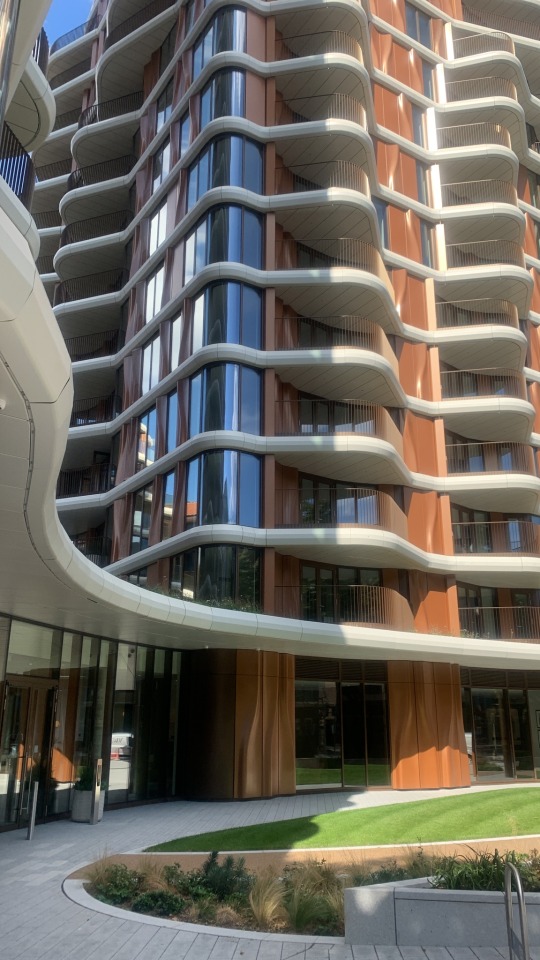
New build in London Bridge behind my work look stunning ✨
#new beginnings#estate sale#dream house#house inspo#apartment#black women in luxury#luxe life#soft life#interior decorating#exterior#decorative#luxury home architects#archtecture#architecture#modern flats#modern buildings#London apartment#London
16 notes
·
View notes
Video
Ibex Building, London by Metropol 21 Via Flickr: Designed by Fuller and Foulsham and opened in 1937. ---------- (LON_DSCN8882 - Image copyrighted).
#London#Art Deco#Landmark#Architecture#Streamline Moderne#Building#Curved#1930s#1937#Modernism#Ibex House#United Kingdom#Style Paquebot#flickr
12 notes
·
View notes
Text
Ok I will admit that that was the most fun I've had researching something more academic ever. Ronda Spain is actually so interesting
Just so you know in the tags I meant to say halves not halfs I just don't feel like retyping everything
#DID YOU JNOW THAT APPARENTLY ITS THE PLACE THAT FOUNDED MODERN DAY BULLFIGHTING??#AND YOU NEVER HEAR ANYTHING ABOUT THIS TOWN#also its divided into two halfs: El Mercadillo which is the newer half and La Ciudad which is the older half#the whole town is split by this giant gorge called the Tajo gorge and the bridge that connects the two halfs is called Puente Nuevo even#though its not nea at all it was built in 1793#it has such an interesting backstory. the first time they built it they did a crappy job and it collapsed and killed 50 people#and its sort of like the london tower where theres a holding cell just above the middle arch#La Ciudad dates back to when the Moors came and conquered Spain so it has a bunch of old architecture and it has one of the most well#preserved arab bath houses in all of spain and the buildings are gorgeous and there's tiered gardens#El Mercadillo dates to the Spanish reconquest of the town#and theres a giant church that got built overtop of an old mosque#and all the buildings are in the old Andalusian style and that part of town has a market in the middle of the city#also el mercadillo had massive bullfighting ring called the Plaza del Toros and it is BEAUTIFUL and it has gardens and a museum#connected to it. did i mention that this entire town is sitting on top of a mountain range and every edge of the city is a steep drop#they are nearly completely surrounded by cliffs AND THEY HAVE THEIR OWN WATERFALL UNDERNEATH THE BRIDGE
2 notes
·
View notes
Video
Lime Street vertical by John Wolfe Via Flickr: City of London, UK - 2024
#London#Bank#City of London#Vertical#Nikon D850#day#Tamron#15-30mm#Nikon#D850#Lime Street#Lloyds#Leadenhall#The Scalpel#urban architecture#skyscrapers#vertical perspective#modern#architecture#steel#glass#iconic#buildings#financial district#urban#geometry#contemporary#design#architectural#Lloyd's of London
1 note
·
View note
Text
Weathered Architecture & London Town’s Modernity!
I love seeing the weathered architecture that continues to lay the foundations for London’s modernity! #shotoniphone #photography #london #architecture #weather #buildings #modern #old #art #spirit
#Architecture#Art#Buildings#Design#Landscape Photography#London#MN#Modern#Old#Photography#Shot on iPhone
0 notes
Text
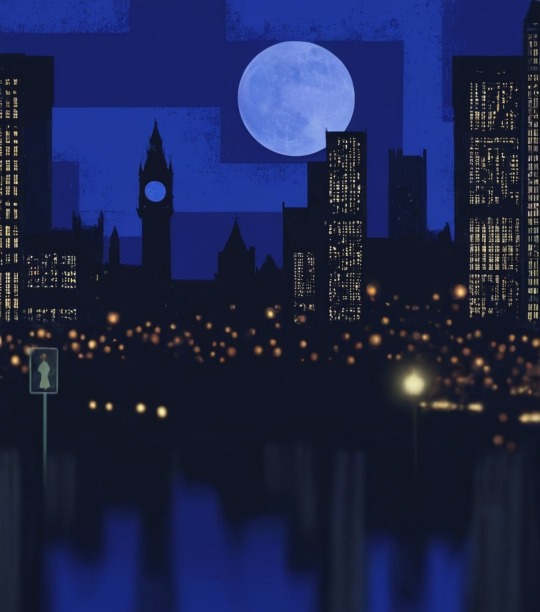
#londonnight#london#buildings#contemporary#stpaul#lightandshadow#architectureart#nightscene#moonlight#digitalart#ai#citylights#bigben#lightandshadows#shadesofblue#traffic#modern#cityscape#trafficlights#art#aiart#architecture#housesofparliament#semiabstract#digitalpainting#londoncalling#midnightsparkle#silhouettes
0 notes
Text
At My Own Cottage, we're proud to offer Affordable Prefab Homes in Ontario that are setting new standards in the construction industry.
These homes are not just cost-effective, their superior quality also ensures that you get the utmost value for your investment.
Our affordable prefab homes are a testament to our commitment to combining affordability, quality, and sustainability.
The economic advantage of our prefab homes is unparalleled.
Traditional onsite construction often goes over budget and schedule, but with our prefab homes, what you see is what you get.
Our homes are pre-designed and pre-constructed in a controlled environment, allowing us to ensure efficient use of materials and time, which translates into cost savings for homebuyers!
Quality-wise, our prefab homes are built using state-of-the-art technology and premium materials.
They are designed to be robust, durable, and weather-resistant, complying with all Ontario building codes.
This guarantees homeowners peace of mind, knowing their investment will stand the test of time.
Moreover, our prefab homes are not only affordable and high-quality, but they are also a practical solution for Ontario's homebuyers.
With the rising costs of real estate, our prefab homes offer an excellent way to own a home without the traditionally associated high costs.
Plus, their compact design is perfect for those looking to downsize or live minimally without sacrificing comfort or aesthetics.
In conclusion, when you choose Affordable Prefab Homes from Ontario by My Own Cottage, you're choosing the most economic, high-quality, and practical solution for your housing needs.
If you're interested in learning more, visit us at https://myowncottage.ca/prefab-homes-ontario, or visit this post's page at https://myowncottage.ca/affordable-prefab-homes-ontario/
If you want to get started immediately, book a free consultation with us on our website at myowncottage.ca or call us directly at 705-345-9337!
Let's get started building your custom dream home today!
#prefab#ontario#barrie ontario#toronto#london ontario#kitchener#affordable house#affordable home#modern home#custom home#home builders#home building companies#realestate#interior design
0 notes
Text
was thinking about this

To be in "public", you must be a consumer or a laborer.
About control of peoples' movement in space/place. Since the beginning.
"Vagrancy" of 1830s-onward Britain, people criminalized for being outside without being a laborer.
Breaking laws resulted in being sentenced to coerced debtor/convict labor. Coinciding with the 1830-ish climax of the Industrial Revolution and the land enclosure acts (factory labor, poverty, etc., increase), the Metropolitan Police Act of 1829 establishes full-time police institution(s) in London. The "Workhouse Act" aka "Poor Law Amendment Act of 1834" forced poor people to work for a minimum number of hours every day. The Irish Constabulary of 1837 sets up a national policing force and the County Police Act of 1839 allows justices of the peace across England to establish policing institutions in their counties (New York City gets a police department in 1844). The major expansion of the "Vagrancy Act" of 1838 made "joblessness" a crime and enhanced its punishment. (Coincidentally, the law's date of royal assent was 27 July 1838, just 5 days before the British government was scheduled to allow fuller emancipation of its technical legal abolition of slavery in the British Caribbean on 1 August 1838.)
---
"Vagrancy" of 1860s-onward United States, people criminalized for being outside while Black.
Widespread emancipation after slavery abolition in 1865 rapidly followed by the outlawing of loitering which de facto outlawed existing as Black in public. Inability to afford fines results in being sentenced to forced labor by working on chain gangs or prisons farms, some built atop plantations.
---
"Vagrancy" of 1870s-onward across empires, people criminalized for being outside while being "foreign" and also being poor generally.
Especially from 1880-ish to 1918-ish, this was an age of widespread mass movement of peoples due to the land dispossession, poverty, and famine induced by global colonial extraction and "market expansion" (Scramble for Africa, US "American West", nation-building, conquering "frontiers"), as agricultural "revolutions" of imperial monoculture cash crop extraction resulted in ecological degradation, and as major imperial infrastructure building projects required a lot of vulnerable "mobile" labor. This coincides with and is facilitated by new railroad networks and telegraphs, leading to imperial implementation or expansion of identity documents, strict work contracts, passports, immigration surveillance, and border checkpoints.
All of this in just a few short years: In 1877, British administrators in India develop what would become the Henry Classification System of taking and keeping fingerprints for use in binding colonial Indians to legal contracts. That same year during the 1877 Great Railroad Strike, and in response to white anxiety about Black residents coming to the city during Great Migration, Chicago's policing institutions exponentially expand surveillance and pioneer "intelligence card" registers for tracking labor union organizing and Black movement, as Chicago's experiments become adopted by US military and expanded nationwide, later used by US forces monitoring dissent in colonial Philippines and Cuba. Japan based its 1880 Penal Code anti-vagrancy statutes on French models, and introduced "koseki" register to track poor/vagrant domestic citizens as Tokyo's Governor Matsuda segregates classes, and the nation introduces "modern police forces". In 1882, the United States passes the Chinese Exclusion Act. In 1884, the Ottoman government enacts major "Passport Nizamnamesi" legislation requiring passports. In 1885, the racist expulsion of the "Tacoma riot".
Punished for being Algerian in France. Punished for being Chinese in San Francisco. Punished for being Korean in Japan. Punished for crossing Ottoman borders without correct paperwork. Arrested for whatever, then sent to do convict labor. A poor person in the Punjab, starving during a catastrophic famine, might be coerced into a work contract by British authorities. They will have to travel, shipped off to build a railroad. But now they have to work. Now they are bound. They will be punished for being Punjabi and trying to walk away from Britain's tea plantations in Assam or Britain's rubber plantations in Malaya.
Mobility and confinement, the empire manipulates each.
---
"Vagrancy" amidst all of this, people also criminalized for being outside while "unsightly" and merely even superficially appearing to be poor. San Francisco introduced the notorious "ugly law" in 1867, making it illegal for "any person, who is diseased, maimed, mutilated or deformed in any way, so as to be an unsightly or disgusting object, to expose himself or herself to public view". Today, if you walk into a building looking a little "weird" (poor, Black, ill, disabled, etc.), you are given seething spiteful glares and asked to leave. De facto criminalized for simply going for a stroll without downloading the coffee shop's exclusive menu app.
Too ill, too poor, too exhausted, too indebted to move, you are trapped. Physical barriers (borders), legal barriers (identity documents), financial barriers (debt). "Vagrancy" everywhere in the United States, a combination of all of the above. "Vagrancy" since at least early nineteenth century Europe. About the control of movement through and access to space/place. Concretizing and weaponizing caste, corralling people, anchoring them in place, extracting their wealth and labor.
You are permitted to exist only as a paying customer or an employee.
#get to work or else you will be put to work#sorry#intimacies of four continents#tidalectics#abolition
3K notes
·
View notes
Text
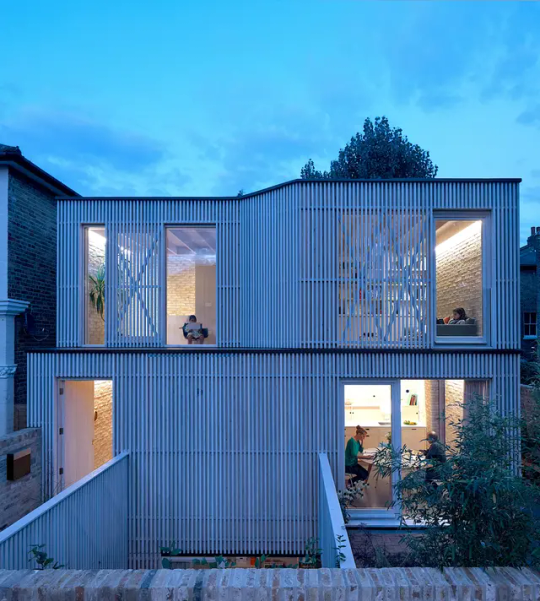
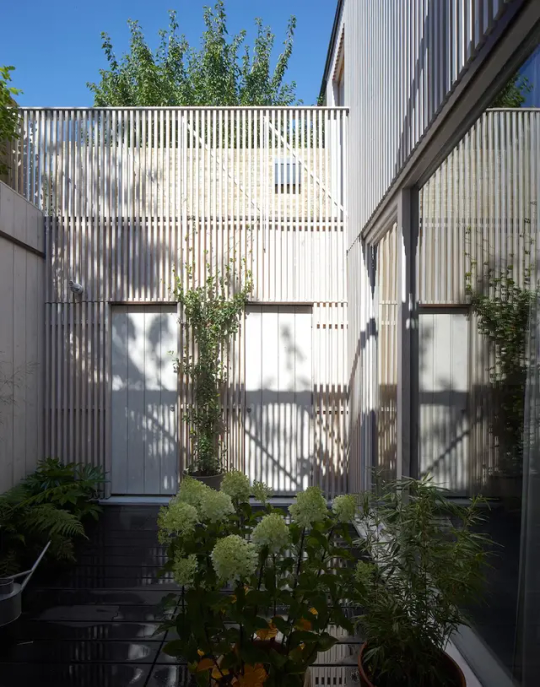





Pocket House, London - Tikari Works
#Tikari Works#architecture#design#building#modern architecture#interiors#minimal#house#house design#contemporary#contemporary architecture#beautiful homes#cool houses#beautiful architecture#small house#basement#concrete#courtyard#light and shadow#bedroom#living room#beautiful light#timber cladding#timber#london#british architecture#brick#concrete floor polishing#kitchen#design blog
223 notes
·
View notes
Text
The wardrobe source post
Have had several Asks about where I get my clothes, so here we go.
My general style:



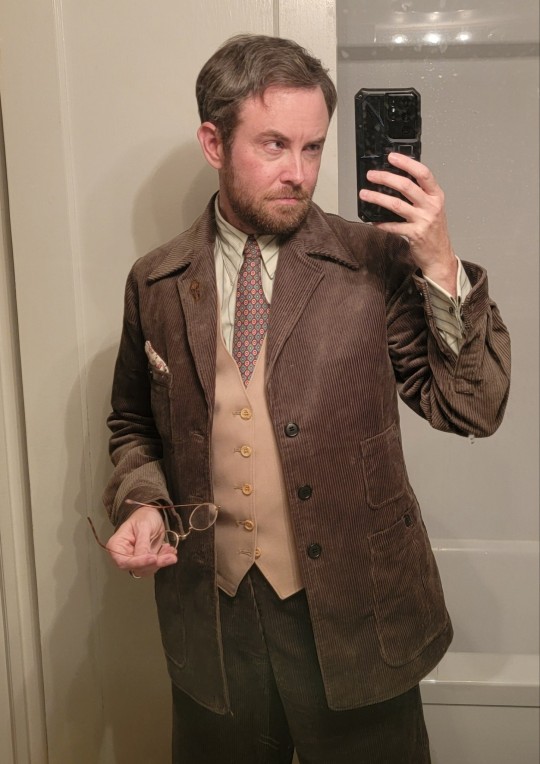
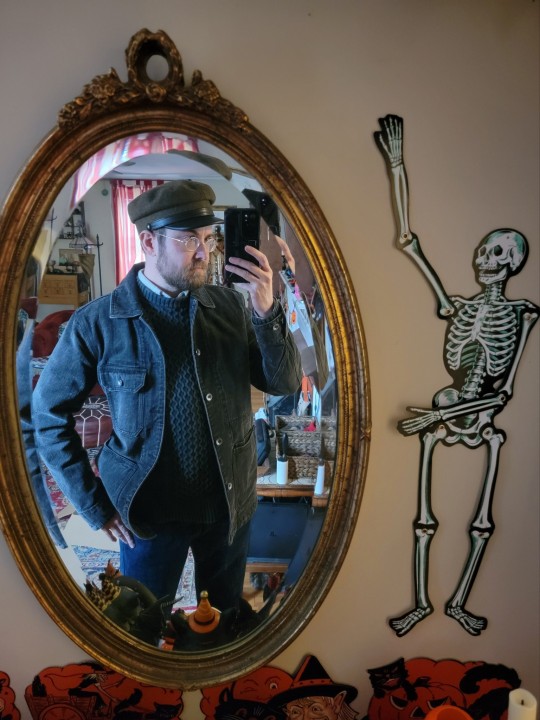




My build: I am 5'10", around 155-160lbs. I am a trans man, so that means some fit challenges. 36R tops, 32x32 bottoms, 8ish shoe.
My preferences: I adore 1930s/40s outdoor "country gentleman" and work wear -- I am building a wardrobe here. I love texture and mixing patterns. I try to stick to natural fibers. I am spending more money on pieces that last longer and shrinking my closet to a modern capsule and a vintage capsule. (Though I will sometimes mix eras.) Brown is my favorite color.
Online thrifting:
Unclaimed baggage. Really great for giving higher end brands a shot at huge discounts.
Gem App. Fantastic for searching multiple sites like ebay, poshmark, etc.
Modern clothing:
Taylor Stitch. Standouts are sweaters and wool trousers. Sizing runs trim - I size up to a 38 here instead of my usual 36. This means it's a great source for smaller trans mascs.
Yiume. Shirts a bit thin, but fun prints and frequent sales.
Imperfects. Small range, but fun, higher waisted fishtail trousers.
Taft Boots. Comfy right out of the box. Great at making small feet look elegant. Men's sizes start at a 6.
Schott. Fantastic pea coats. Recommended by Derek Menswear.
Vermont Flannel. Super thick plaid, flannel shirts. Very warm.
Sterkowski hats. Range includes flat caps and captains/fisherman.
Spier & MacKay. Great winter coats, run a bit trim. Their trousers look hideous and despite a bit of a vintage look, everything else in the catalog is too low waisted and skinny.
LLBean. Great for sweaters. I love my grey commando style one.
Banana Republic. I like a lot of their older stuff, so a brand to watch on Poshmark.
New Vintage:
Cathcart London. Sweaters and jeans are great. Hit or miss fit on the rest. Frequent sales, small runs.
Darcy Clothing. Great all across the board. They are a film supplier, so restocks are regular. Their suspenders are hard to find, fyi, so search under "braces".
Revival Vintage. Dipping into poly blends, but a great selection of fairisle sweater vests.
JoBear boots. Great prices and styles, requires breaking in.
Focusers. Vintage glasses. They will replace lenses. Love the Peabody gold wire frames.
Old Glasses Shop. Frames you won't find at Focusers. You can try on frames before committing to an Rx, but have to pay for the return. Love their round tortoise shells.
2K notes
·
View notes

